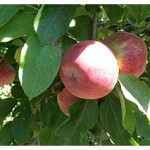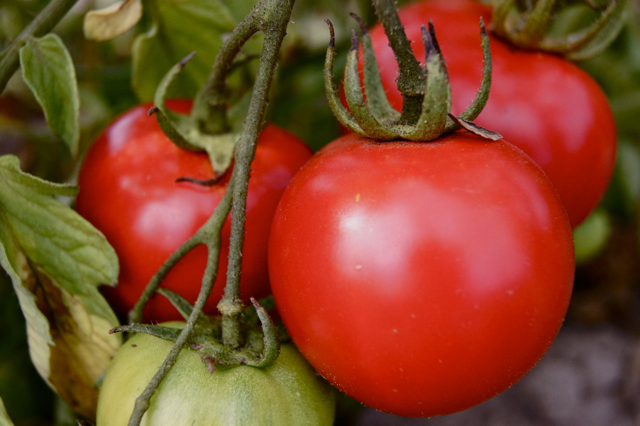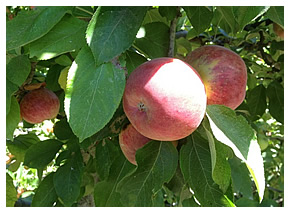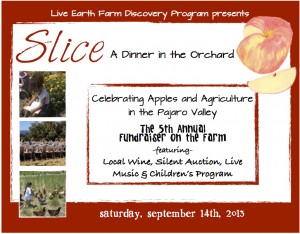Ingredients:
3 tablespoons lemon juice
6 tablespoons butter, softened
1½ pounds broccoli florets
1 cup sweet pepper, cut into thin strips
½ cup padron peppers, sliced thinly (optional)
½ teaspoon sea salt or to taste
¼ teaspoon freshly ground black pepper, or to taste
Directions:
1. In a small saucepan over medium heat, reduce lemon juice by half and stir it into the butter. Refrigerate if needed.
2. Bring water to a full boil in the bottom of a steamer. Arrange the broccoli and peppers on the steamed rack so that the pieces are not crowded. Place the steamer rack on top of the boiling water and cover. Steam the vegetables for 3-5 minutes, or until just tender.
3. Remove from the steamer and place on a platter. Season with salt, pepper, and lemon butter.
Makes 6 servings
This dish is so easy to make. Hearty and delicious, it improves with time.
Ingredients:
3 tablespoons olive oil
3 tablespoons minced garlic
3 cups squash, small dice
1 cup tomato, seeded and diced
3 cups cooked chickpeas, drained and rinsed
2 tablespoons chicken or vegetable broth
¼ cup chopped cilantro
1 teaspoon sea salt or to taste
½ teaspoon freshly ground black pepper, or to taste
¼ cup lime juice
Directions:
1. Heat the olive oil in a large sauté pan over medium heat. Add the garlic and cook until aromatic, about 1 minute. Add the squash and tomato and sauté until the squash is tender, about 4-5 minutes.
2. Add the chickpeas and enough broth to keep them moist. Stew until heated through, about 6-7 minutes.
3. Add the cilantro and season to taste with the sea salt, black pepper, and lime juice.
Makes 8 servings
 Crop & Field Notes: Dry-farmed Tomatoes, Apples, and Strawberries
Crop & Field Notes: Dry-farmed Tomatoes, Apples, and Strawberries
The waiting is over; dry-farmed tomatoes will be in everyone’s share this week. What’s special about dry-farming? First, it doesn’t use much water but more importantly it brings the best flavor out of a tomato. Dry-farming tomatoes is a technique perfected a couple of decades ago by Molino Creek, a farming cooperative situated in the coastal hills above Davenport. We are fortunate to enjoy a similar microclimate. Dry-farming techniques involve proper spacing, soil moisture control, timely cultivation practices, soil rotation and a number of different fertility practices. Under optimum conditions the plants, although stressed from a lack of water, will stay healthy enough to yield tomatoes bursting with flavor.

“Early Girl” is the variety of choice for dry-farming; it is one of the very few tomato varieties (possibly the only one) that can be dry-farmed. Although this popular tomato variety was bred in France, tomatoes find their origin in the impenetrable jungles of Central and South America. The Mayans called it “xtomatl” hence the name tomato. When the Spanish brought the first tomato to Europe the Church condemned eating tomatoes as a scandalous and sinful indulgence. The French on the other hand admired its sensuous appearance and were enticed by it, believing that the red fruit had aphrodisiac powers, and so called it “pomme d’amour” or love apple. Today, we probably couldn’t imagine anything more scandalous than not having tomatoes as part of our diet.
The crop of tomatoes we are now harvesting was sown in a greenhouse in mid-January and transplanted in the field in March. It takes over 6 months from planting the seed to finally harvesting the first tomatoes. To extend our harvest into the fall, we add two additional tomato plantings staggered 3 and 6 weeks apart.
Besides “love apples” we are starting to harvest our true apples. The first, the Summerfeld, might make it into our fruitshares this week to replace the strawberries, which are going through their natural seasonal downcycle.

Summerfeld apples
Broccolini, commonly known as a super food, is the star player in this vegetarian noodle dish. High in fiber, broccolini is also a good source of vitamin B-6, which is more difficult to find in a vegetarian diet. Broccolini is also rich in calcium and vitamin C. Couple this with all the vitamin A, folate, and potassium in the arugula, you have one great-tasting healthful salad.
Ingredients:
SALAD:
6 ounces rice noodles or noodles of your choice
2 cups broccolini, cut up
4 cups arugula (or mizuna)
1 cucumber, sliced
½ cup peanuts
DRESSING:
1/3 cup rice vinegar
1½ tablespoons honey
12-16 drops toasted sesame oil
12-16 drops chili oil
¼ cup sesame oil, untoasted
sea salt
Directions:
1. Boil noodles until just soft; do not overcook, about 3 minutes for rice noodles. Rinse in cold water.
2. Boil or steam broccolini for about 2 minutes, until crisp-tender.
3. Clean the arugula or mizuna, or use a combination.
4. To make the dressing – mix all the ingredients together. You can play with the toasted sesame and chili oils to get the flavor you like. When adding salt, remember the noodles are bland and the dressing might require more salt than expected.
5. To compose the salad, make a bed of greens. Layer the noodles. Then the cucumbers, peanuts, and dressing.
Serves 4
Ingredients:
2-3 pounds carrots, cut into sticks
water, about 2 quarts
one of the following:
1 tablespoon sea salt or
2-3 teaspoons sea salt and ¼ cup whey or
a starter culture such as Caldwells Cultured Vegetable Starter Or Body Ecology Starter Culture and salt as indicated by instructions for the specific culture you are working with.
Directions:
1. If using just salt or salt and whey, dissolve the salt in water and add the whey if using. If using a starter culture, prepare the liquid according to the package instructions.
2. Place the carrots sticks in the jar and pour the liquid over the carrots. Ideally the carrots should be submerged under the liquid. Cover with cheesecloth and place in a cool, dry area and ferment for 2 weeks or longer at room temperature.
3. Once the fermentation period is complete, the carrots can be removed and put in a storage container if desired. Store cultured carrots in the refrigerator.
Makes approximately 2 quarts
Both recipes can be made the day ahead. The salad can store in the refrigerator for 2-3 days, and the dressing can store for 5 – you may need to add a little lemon juice/water to the dressing before serving, as the tahini tends to thicken over time.
Ingredients:
SALAD:
4 small beets
4 radishes
2 oranges
1 tablespoon finely chopped fresh mint
¼ cup lemon juice
¼ cup olive oil
sea salt
black pepper
2 cups arugula
2 avocadoes
DRESSING:
¼ cup fresh mint leaves
¼ cup fresh cilantro
¼ cup lemon juice
¼ cup tahini (sesame seed butter)
¼ cup olive oil
¼ cup water
1 large clove garlic
1 teaspoon sweetener of choice
½ teaspoon sea salt
Directions:
1. To make the salad: Slice the beets and radishes with a madoline slicer or very thin with a sharp knife, and transfer to a bowl. Peel oranges, making sure white part is removed. Slice oranges into thin segments, add to bowl. Add mint, lemon juice, olive oil, salt, and pepper to taste. Mix well, and allow to marinate for 30 minutes.
2. To Make the Dressing: Combine dressing ingredients in a food processor or blender, and blend until smooth and creamy. If the mixture is too thick, add water until desired consistency is reached.
3. To Serve: Place arugula, and 2 tablespoons dressing into a bowl and mix well. Transfer to 4 serving plates. Layer salad mixture – about ½ cup per plate – on top of greens. Drizzle with remaining dressing and top with avocado slices.
Serves 4
Ingredients:
8 sweet peppers
2 summer squash, cut in half lengthwise and scored crosswise across the top
olive oil for brushing
¼ stick unsalted butter
¾ cup plus 2 tablespoons finely chopped fresh basil
Directions:
1. Prepare the barbeque to medium-high heat. Grill peppers until charred on all sides. Transfer to a paper bag; roll top to close tightly. Let steam for 10 minutes. Peel and seed peppers. Cut onto ½-inch strips.
2. Brush squash with olive oil, sprinkle with salt and pepper. Grill until charred in spots, turning occasionally, about 5 minutes. Transfer to a bowl, cover to keep warm.
3. Melt butter in a heavy, large skillet over medium-high heat. Add the pepper strips. Saute until heated through, stirring often, about 3-5 minutes. Stir in ¾ cups basil. Season to taste with salt and pepper. Spoon into the center of a large platter. Arrange squash around the peppers. Sprinkle remaining basil over and serve.
Serves 12
Ingredients:
1-2 bunches chard, stems removed and set aside, leaves cut into bite-sized pieces and stems chopped finely
¼ cup olive oil
¾ cups finely chopped leeks, white part and only the tender green part
4 cloves garlic, minced
2 tablespoons capers, chopped
sea salt
Directions:
1. Bring extra large pot of salted water to a boil. Add chard and stems and blanch until just tender when the leaves begin to turn bright green, about 2-3 minutes. Drain and run under very cold water to stop the cooking process.
2. Heat oil in a large pot over medium heat. Add the leeks and sauté until tender, but not brown, about 4 minutes. Add the garlic and capers; stir 1 minute. Stir in the chard and sauté until heated through, about 3-5 minutes. Season to taste with sea salt and pepper. Remember, the capers are salty so you may not even need to salt! Taste before you add the salt. Transfer to a serving bowl and serve.
Serves 6
Ingredients:
8 tomatoes
3 tablespoons olive oil
2 cups white corn kernels cut from cob
2 cups chopped onions
2 cloves garlic, peeled
1 cup chopped tomatoes
3 cups ¼-inch cubes summer squash
2 tablespoons chopped cilantro
1 teaspoon dried oregano
Directions:
1. Core whole tomatoes creating a 21/2-inch opening at top. Using a melon baller, scoop out tomato, transferring juices and pulp to a small bowl for filling. Turn tomatoes upside down, onto a paper towel to drain.
2. Heat 1 tablespoon oil in a skillet over medium-high heat 1-2 minutes. Add corn and toss until tender and beginning to turn color, 2-3 minutes. Using a slotted spoon, transfer the corn to a medium bowl. Add the remaining 2 tablespoons oil to the skillet. Add the onions and sauté until translucent, about 4 minutes. Using a garlic press, squeeze in garlic, stir 30 seconds. Add chopped tomatoes and reserved tomato pulp and juices. Saute until tomatoes are soft, about 5 minutes. Mix in squash, cilantro, oregano, and corn. Saute until sauce thickens and squash is just tender, about 8 minutes. Season with sea salt and pepper to taste.
3. Arrange tomato shells, cut side up, on a small baking sheet. Spoon in filling, mounding high. Let tomatoes stand at room temperature.
4. Preheat oven to 350 degrees. Bake tomatoes until filling is just heated through and tomato shells are just tender, about 25 minutes.
Makes 8 servings
 Special Slice Discount for CSA Members
Special Slice Discount for CSA Members
We would like to extend a special invitation to Live Earth Farm CSA Members to attend Slice on September 14th for a discounted price. For two weeks from July 30th to August 13th LEF CSA members will enjoy 10% off tickets to Slice. In order to get your special price enter the discount code LEFCSA2013 or follow this link. This discount is only available to the first 50 members to use it, so get yours while you can. To read more about the event that includes a farm fresh, multi-course, wine pairing dinner, live music, silent auction, student art, and a children’s program visit our blog post or the event web page.
Breathe in the farm fresh air while together, we build the future of healthy children, farms and communities.
UPDATE: Since the farm posted this opportunity in today’s newsletter, I have extended the promotion to end next Tuesday 9/3 instead of 8/13. Happy Labor Day folks!

